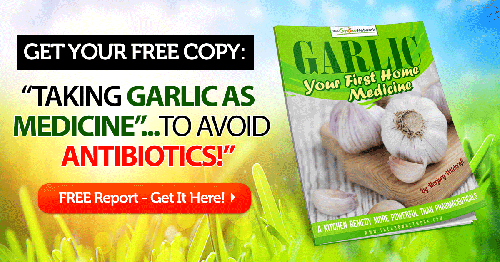These 15 natural antibiotic alternatives will help you fight off bacterial infections—without destroying your immune-supporting gut bacteria!
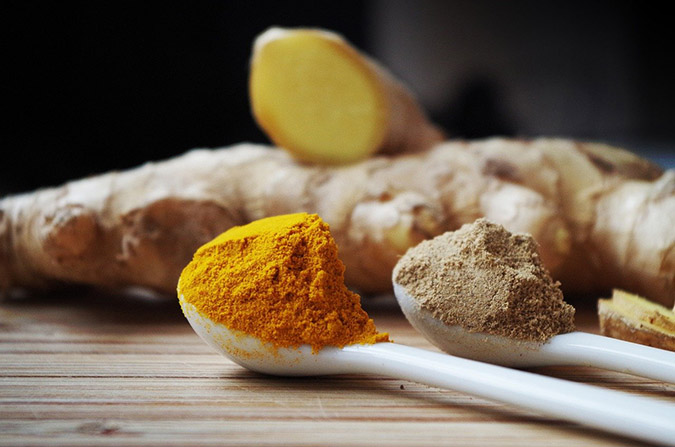
15 Natural Antibiotic Alternatives
Are you looking for natural antibiotic alternatives that will fight off the nasty bugs without destroying your immune system in the process?
Be sure to check out “The Miracle of Garlic” (you can get a free copy here), which explains how garlic can be used to fight common infections.
But garlic isn’t the only natural antibiotic available…
… So I’ve put together this list of 15 natural antibiotic alternatives you can try if you need to boost your immune function, eliminate infection, or recover from an illness.
Discover how to treat 12 common ailments—from anxiety and insomnia to indigestion and stomachache—without needing to go to the drugstore. Thousands have already enrolled in our 8-week “Home Medicine 101” eCourse. You’ll love it, too—I promise!
Each of these packs a wallop against dangerous bacteria without knocking out your stomach, nervous system, or the good bacteria that help your immune system fight off infections naturally.
And hey, if you’ve used any of these to prevent or treat a common illness or infection, I’d love to hear your story!
Tell me about it in the comments below…
Natural Antibiotic Alternative #1—Garlic
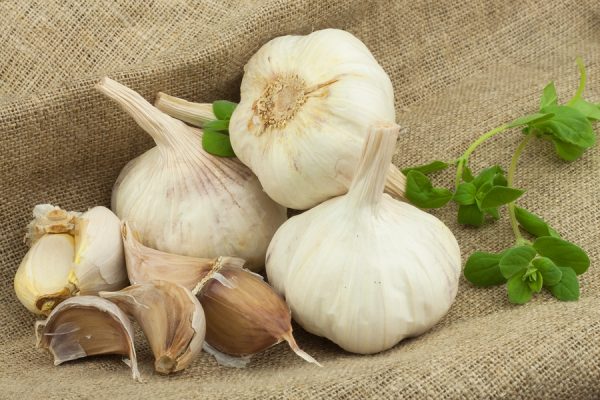
Ahh, garlic. That pungent-smelling, mouth-watering clove of antibiotic goodness is my #1 favorite antibiotic alternative.
You May Also Enjoy:
“How to Peel 20 Cloves of Garlic in 8 Seconds”
Spicy, bacteria-fighting, and perfect for when I want my own personal space. 
(If you want to learn how I take garlic to fight infection without SMELLING like garlic, be sure to grab your free copy of “The Miracle of Garlic.”)
It’s been shown to combat a wide range of infections and illnesses, including:
- Common colds
- Flus
- Fungal skin infections
- STDs (including genital warts)
- Lyme disease
- Pneumonia
- Candidiasis
- Diabetes
- High blood pressure
- High cholesterol
- Yeast infections
- Intestinal parasites
- Meningitis
- Herpes
It has even shown promise for destroying three “nightmare superbugs”:
Robin Cherry writes, “Garlic is a broad-spectrum antibiotic, meaning it’s effective against a wide range of disease-causing bacteria… Garlic shows promise against two of the three most dangerous bacterial infections (christened nightmare superbugs by the CDC):
Antibiotic resistant gonorrhea and MRSA (methicillin-resistant Staphylococcus aureus, commonly found in hospitals where there has the potential to weaken those whose immune systems are already compromised).” (pp 31-32)
It can help prevent food poisoning by killing E. coli and salmonella.
And it is also shown to boost immunity, helping fight off bacterial infections.
There are many reasons we call garlic “miraculous.”
Natural Antibiotic Alternative #2—Goldenseal
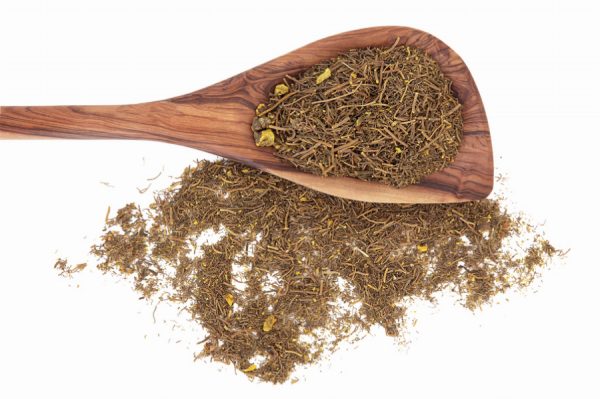
Goldenseal is a perennial herb, also called “orange root,” native to the eastern United States and southeastern Canada.
The Encyclopedia of Natural Medicine lists goldenseal as “one of the most effective of the herbal antimicrobial agents” (p 475).
Vaginal and bladder infections are destroyed by goldenseal.
A common winter infection—sinus infections—are treatable with goldenseal.
Goldenseal contains “berberine,” which has “been shown to inhibit the adherence of bacteria to human cells, so they cannot infect the cells” (p 959).
It is also thought to be effective in treating strep throat, diarrhea, gum disease, and pneumonia.
Natural Antibiotic Alternative #3—Licorice
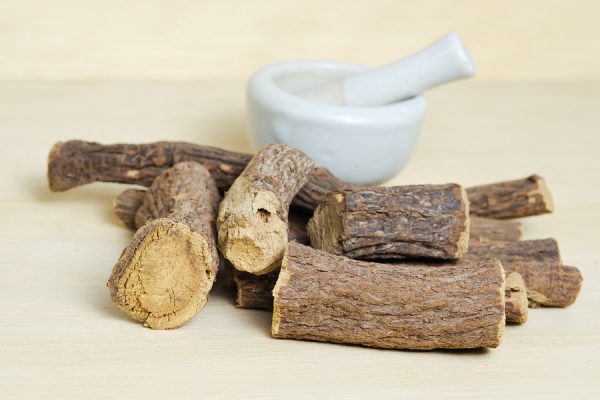
The licorice root is a super-powered natural antibiotic.
Steven Orr, in The New American Herbal, says licorice root contains “glycyrrhizic acid,” which has been shown “to treat and soothe respiratory problems like bronchitis, usually in the form of cough drops and syrup, and also arthritis” (p 225).
It is even being studied to measure its ability to treat “hepatitis, cirrhosis, herpes, and flu” (p 225).
You May Also Enjoy:
But the most impressive attribute of licorice is that glycyrrhizic acid in licorice root is showing promise for treating the deadliest illnesses of our time: HIV-1 and SARS-related coronavirus.
It’s an antibiotic, an antiviral, and it’s delicious! 
It is even used to treat conditions like eczema, asthma, and Lyme disease.
(See The Herbal Drugstore, The Encyclopedia of Natural Medicine (3rd Edition), and Herbal Antivirals for more about licorice root).
Natural Antibiotic Alternative #4—Echinacea

Echinacea has a particular scent that instantly opens up your airways. That’s how you know it is effective for colds, sinus infections, strep-throat and other respiratory issues.
You May Also Enjoy:
The purple coneflower is pretty to grow in your garden and can be made into a tea, extract, juice, powder, or cream for treating a number of infections.
“There have been more than 300 scientific investigations on the immune-enhancing effects of Echinacea—one of the most popular herbs in the treatment of the common cold” (The Encyclopedia of Natural Medicine, p 437).
Paired with goldenseal, Echinacea helps knock out strep throat. It has also been used to treat a range of problems “from skin wounds to dizziness” (Mayo Clinic Book of Alternative Medicine, p 53).
The Herbal Drugstore lists treating Lyme disease and vaginal infections among its uses.
Natural Antibiotic Alternative #5—Aloe Vera
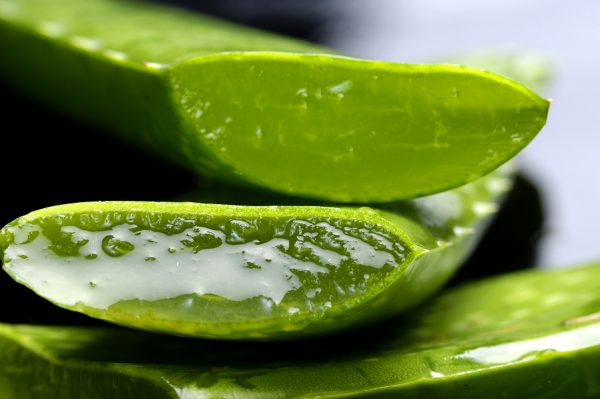
Perhaps you’ve already experienced the skin-soothing wonder of aloe vera gel.
But beyond its ability to soothe damaged skin, aloe vera has been shown effective in the treatment of gum disease, hypertension, angioedema (rapid swelling from trauma or allergies), asthma, Crohn’s Disease and ulcerative colitis, diabetes, peptic ulcer, and other skin issues, such as psoriasis, Seborrheic Dermatitis, plaques from the shingles virus, and cuts and scrapes.
It’s ability to “inhibit the production of reactive oxygen metabolites and inflammatory mediators by human colon epithelial cells” makes it effective in treating the symptoms of Crohn’s Disease—a particularly uncomfortable and often untreatable disease (The Encyclopedia of Natural Medicine, p 467).
It can also help relieve asthma symptoms in sufferers who are not dependent on corticosteroids.
(See The New American Herbal and The Herbal Drugstore for more about the antibiotic properties of aloe vera.)
Natural Antibiotic Alternative #6—Coconut Oil
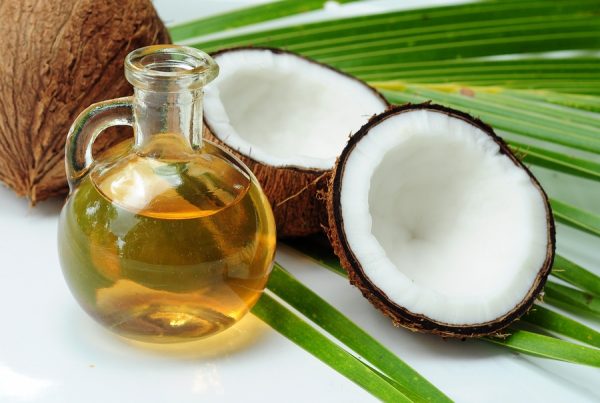
I use coconut oil as lotion. It heals dry and broken skin and gets rid of harmful bacteria in the process. Coconut oil (and coconut milk) is a common ingredient in homemade toothpaste, lotion, shampoo, and other beauty-related products.
Coconut Oil.com says: “The antiviral, antibacterial, and antifungal properties of the medium chain fatty acids/triglyucerides (MTCs) found in coconut oil have been known to researchers since the 1960s.
Research has shown that microorganisms that are activated include bacteria, yeast, fungi, and enveloped viruses.”
Coconut oil contains lauric acid, which can form into monolaurin in your body. Monolaurin helps attack some of the nastiest forms of bacteria.
Oil-pulling is becoming a common practice, and for good reason. Chew up a tablespoon of coconut oil and swish in your mouth like mouthwash for a while to remove bacteria, clean and whiten your teeth, prevent gum disease, and repair cavities.
Natural Antibiotic Alternative #7—Tea Tree Oil
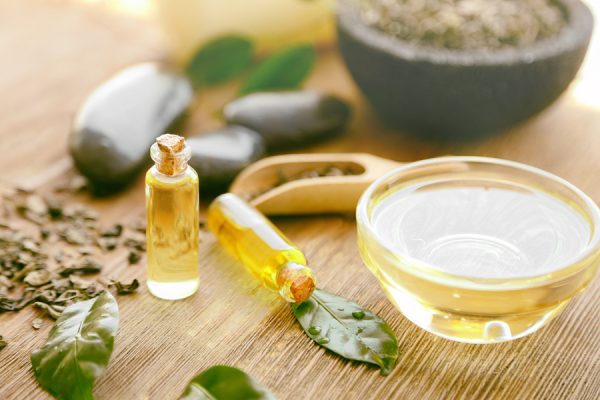
Tea tree oil is a well-known acne treatment.
“Tea tree oil possesses significant antiseptic properties and is regarded by many as an ideal skin disinfectant” (The Encyclopedia of Natural Medicine, p 250).
But did you know it’s also good for healing skin infections, relieving itchiness from rashes, soothing sun burns, treating warts, healing insect bites, treating psoriasis, and much more.
Plus, tea tree oil is also good for clearing vaginal infections (vaginitis) and can help treat chronic candidiasis (see The Herbal Drugstore).
Be careful, though, using tea tree oil around house cats. Cats’ livers cannot process tea tree oil and if it comes into contact with their skin, it can have dangerous—even fatal—side effects.
Natural Antibiotic Alternative #8—Cayenne Pepper
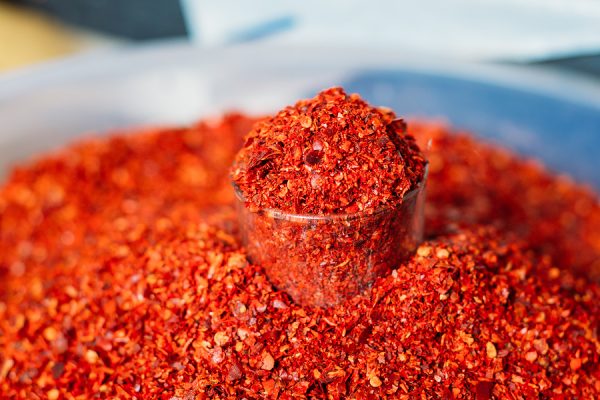
If you like spicy food and suffer from asthma, joint and muscle pain, diabetes, psoriasis, or have a cut/scrape, you’re in luck. Cayenne pepper is good for treating all of those issues.
“The bright red fruit of the plant contains an ingredient called capsaicin, which has been found to deplete nerve cells of a chemical that helps transmit pain messages” (Mayo Clinic Book of Alternative Medicine, p 51).
Capsaicin is also shown to block “the small nerve fibers that transmit the pain” people with diabetes suffer from. “Topically applied capsaicin has been shown to be of considerable benefit in relieving the pain of diabetic neuropathy” (The Encyclopedia of Natural Medicine, p 541).
Capsaicin in cayenne pepper is also effective in getting rid of inflammation, which can help treat psoriasis, and helps to desensitize “airway mucosa to various mechanical and chemical irritants,” which makes it effective in preventing asthma attacks” (The Encyclopedia of Natural Medicine, p 335).
Natural Antibiotic Alternative #9—Turmeric
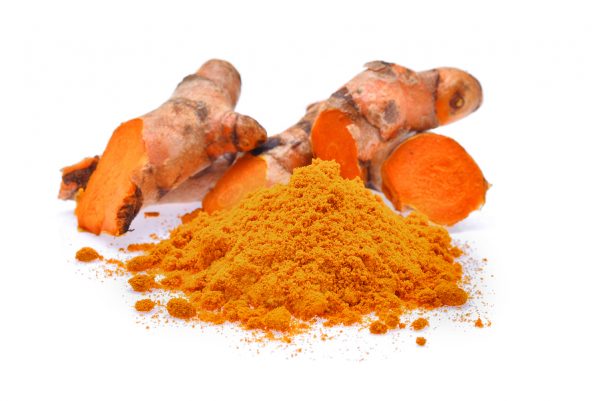
This bright orange spice, commonly used in Indian cuisine, is good for just about everything you can think of that would normally require the consumption of antibiotics.
You May Also Enjoy:
“Zone-Pushing Tips for Growing Ginger and Turmeric in Cold Climates”
“Research shows turmeric reduces liver toxicity, boosts the gallbladder’s performance, helps metabolize fat and reduce bad cholesterol, and may slow the progression of Alzheimer’s disease” (The New American Herbal, p 319).
Turmeric’s active ingredient, curcumin, has been shown to treat osteoarthritis, psoriasis, inflammatory bowel disease, gallstones, and has even shown promise in treating HIV/AIDS.
Curcumin has been “shown to inhibit HIV integrase, the enzyme that integrates a double-stranded DNA copy of the RNA genome, synthesized by reverse transcriptase into a host chromosome” (The Encyclopedia of Natural Medicine, p 260).
It is an effective anti-inflammatory, which makes it effective in treating psoriasis, osteoarthritis, rheumatoid arthritis, and sports injuries.
Add it to recipes, make it into tea, or brush your teeth with a combination of turmeric and coconut oil to whiten and fortify your teeth. You can also add honey and hot water to help soothe symptoms of the common cold (particularly inflammation in your lymph nodes).
Natural Antibiotic Alternative #10—Apple Cider Vinegar
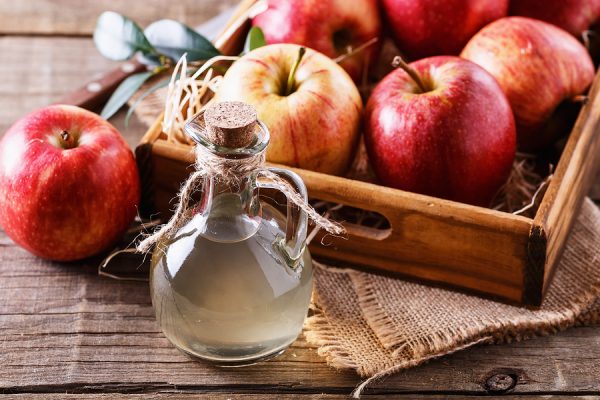
Apple cider vinegar contains malic acid, an antibiotic substance. “It’s a virtual infusion of amino acids, vitamins, and minerals” (The Most Effective Natural Cures on Earth, p 297).
According to Joan Wilen and Lydia Wilen, authors of Healing Remedies, apple cider vinegar can treat a whole host of problems: arthritis, first-degree burns, sore throat, laryngitis, cough, fatigue, aches and pains, dry hair/scalp, rough skin, headaches, shingles virus, indigestion, itchy skin, sprains, cold sores, urinary tract infection, etc. Anything skin or respiratory tract related can be treated or improved with apple cider vinegar.
You May Also Enjoy:
“How to Make Hard Apple Cider in 5 Easy Steps”
Drink apple cider vinegar with hot water, lemon, and honey to break up mucus and infection in your sinuses and relieve a sore throat. Break up that infected mucus and blow it out and away.
Apple cider vinegar is also shown to “improve insulin sensitivity in insulin-resistant subjects,” which means it is an effective treatment for diabetes. “This makes apple cider vinegar a powerful natural weapon, along with cinnamon and chromium, in the fight to control blood sugar and help get carbohydrate metabolism on track” (The Most Effective Natural Cures on Earth, p 298).
Be aware that apple cider vinegar can have some adverse effects if you take certain medications.
Natural Antibiotic Alternative #11—Ginger
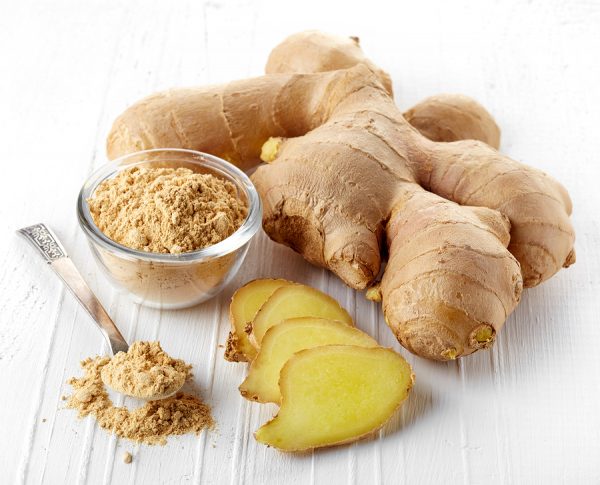
Upset stomach? Stomach flu? Drink some ginger tea.
But that’s not all ginger is good for!
“Research conducted at RMG Biosciences of Baltimore showed that extracts of ginger and galangal, a member of the ginger family, helped inhibit the manufacture of inflammatory brain chemicals, and in turn slowed down the progression of neurodegenerative disorders such as Alzheimer’s” (The Home Reference to Holistic Health & Healing, p 88).
It has also been shown “effective in reducing the symptoms of knee osteoarthritis” (p 150).
You May Also Enjoy:
“9 Simple, Effective Probiotics You Can Make at Home”
Green MedInfo.com references dozens of scientific studies and says, “At least one study that compares the effects of ginger and antibiotics on Staphylococcus aureua and S. pyreus infections shows that ginger extract may be superior…. Ginger has been shown to have an antibacterial effect on respiratory and periodontal infections.”
The Herbal Drugstore lists the following as treatable with ginger: angina, arthritis, bursitis and tendonitis, cervical dysplasia, colds and flu, ear infections, flatulence, headache, heart disease, hives, indigestion, intermittent claudication, intestinal parasites, morning sickness, motion sickness, nausea, Raynaud’s phenomenon, sinus infections, sports injuries, and stroke.
In addition, ginger has antiviral benefits, which means it is able to treat “viral infections including colds, influenza, hepatitis, herpes, yellow fever, measles, chicken pox, and enterovirus” (Herbal Antivirals, p 172).
Natural Antibiotic Alternative #12—Grapefruit Seed Extract
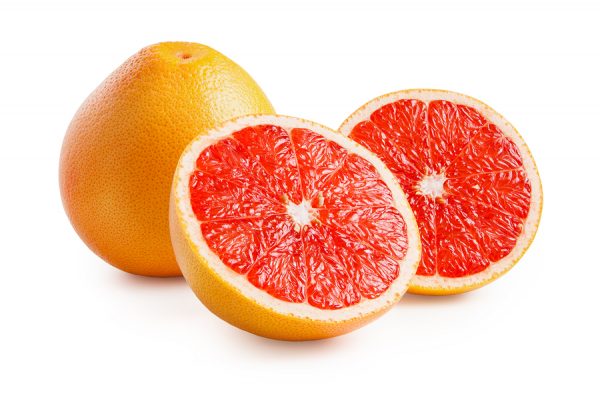
Need to treat a nasty wart? Grapefruit seed extract (GSE) is your natural remedy.
The Herbal Drugstore lists acne, canker sores, cuts and scrapes, diarrhea, ear infections, and fungal skin infections as treatable by grapefruit seed extract.
Grapefruit seed extract is a powerful antibiotic: “In one study, drops of concentrated grapefruit-seed extract were tested for antibacterial properties against a number of gram-positive and gram-negative organisms. The researchers concluded that GSE was comparable to ‘proven topical antibacterials. Although the GSE appeared to have a somewhat greater inhibitory effect on gram-positive organisms than on gram-negative organisms, its comparative effectiveness against a wide range of bacterial biotypes is significant.’” (The Healthy Home Economist)
Grapefruit seed extract can also help combat fatigue.
Natural Antibiotic Alternative #13—Oregano Oil
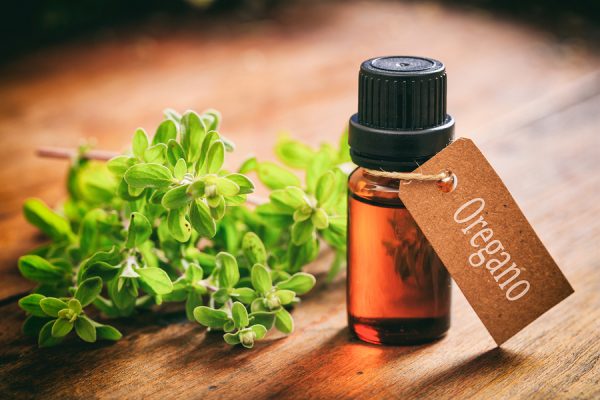
Oregano oil has been shown effective in treating tonsillitis and other bacterial infections. Dr. Axe calls it “the ultimate natural antibiotic.”
In essential oil form, oregano oil is particularly effective: “Essential oil components are fundamentally different [from antibiotics]. Their nonselective activity makes it practically impossible for microorganisms to develop resistance. Microorganisms may be able to resist the attack on one of their targets, but this leaves all the other targets of the essential oil still vulnerable” (The Healing Intelligence of Essential Oils, p 47).
Oregano oil contains carvacrol and thymol, which both “have powerful anti-bacterial and anti-fungal properties” (Dr. Axe).
Hundreds of studies on PubMed have proven carvacrol able to treat bacterial infections, fungal infections, parasites, viruses, inflammation, candida, allergies, and tumors. It has also been shown to kill E. coli bacteria, cancer cells, and five other types of harmful bacteria.
Use oregano oil to treat foot or nail fungus, parasites and infections, and sinus infections.
Be careful about applying oregano oil directly to your skin as it may cause irritation.
Natural Antibiotic Alternative #14—Honey
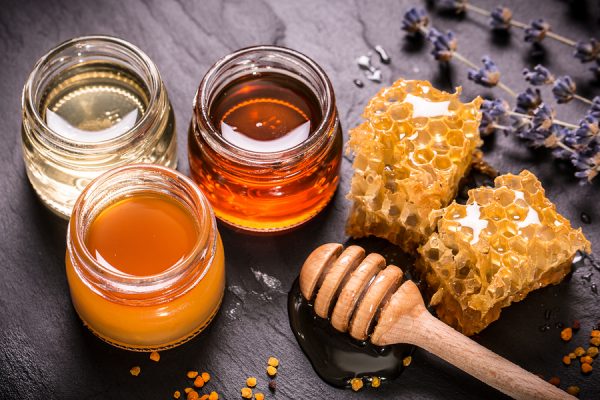
We’ve read the studies that claim bacteria can protect each other and resist antibiotics, but honey breaks up bacteria as it kills it, making it impossible for bacteria to evolve into resistant strains.
Healing Remedies lists honey as a key component in treating hay fever, asthma, cuts and scratches, sore throat, laryngitis, tonsillitis, cough, Emphysema, cataracts, fatigue, athletes foot, leg cramps, headaches, heart conditions, indigestion, acne, sores and lesions, skin problems, sleep disorders, stress, tension, and anxiety, teeth, gum, and mouth issues, and ulcers.
Eating local honey can also help alleviate allergies to local pollen, as the pollen is used to make the honey. Ingesting it can help you become inured to the pollen in the air.
Natural Antibiotic Alternative #15—Cinnamon
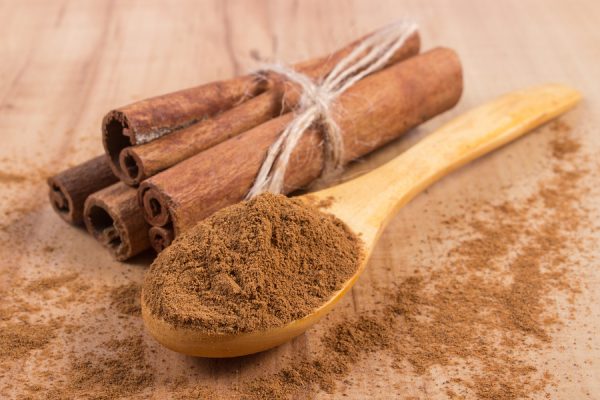
Cinnamon is one natural antibiotic we should always have on hand, particularly when traveling and at an increased potential of contracting bacterial infections:
“The antibacterial effects of cinnamon bark oil make it one of the best options when a person encounters violent bacterial infections of the intestinal tract, especially while traveling in unfamiliar territory!” (The Healing Intelligence of Essential Oils, p 73).
The Herbal Drugstore claims that the cinnamon spice is antifungal and “inhibits fungi that commonly infect the skin.” It is also a key ingredient in natural cough syrup.
Use cinnamon bark oil and cinnamon leaf oil as a powerful anti-infectious blend. Cinnamon is also helpful to reduce or prevent intestinal issues.
What Do You Think?
Have you ever used any of these natural antibiotic alternatives to treat bacterial infections? Are there other plants you prefer to use instead? Share your experiences and insights in the comments below!
_______________
This is an updated version of an article that was originally published on March 29, 2017.
The Grow Network is a participant in the Amazon Services LLC Associates Program, an affiliate program designed to provide a means for our team to earn fees for recommending our favorite products! We may earn a small commission, at no additional cost to you, should you purchase an item after clicking one of our links. Thanks for supporting TGN!
Psst! Our Lawyer Wants You to Read This Big, Bad Medical Disclaimer –> The contents of this article, made available via The Grow Network (TGN), are for informational purposes only and do not constitute medical advice; the content is not intended to be a substitute for professional medical advice, diagnosis, or treatment. Always seek the advice of a qualified health care provider with any questions you may have regarding a medical condition. If you think you may be suffering from any medical condition, you should seek immediate medical attention. You should never delay seeking medical advice, disregard medical advice, or discontinue medical treatment because of information provided by TGN. Reliance on any information provided by this article is solely at your own risk. And, of course, never eat a wild plant without first checking with a local expert.
_______________
References:
American Family Physician. “Health Effects of Garlic.” Accessed Marcy 24, 2017. http://www.aafp.org/afp/2005/0701/p103.html.
Bowden, Ph.D., C.N.S., Jonny. The Most Effective Natural Cures on Earth: The Surprising, Unbiased Truth about What Treatments Work and Why. Fair Winds Press, 2008.
Buhner, Stephen Harrod. Herbal Antivirals: Natural Remedies for Emerging & Resistant Viral Infections. Massachusetts: Storey Publishing, 2013.
Cherry, Robin. Garlic: An Edible Biography. Boston: Roost Books, 2014.
Coconut Oil. “Coconut Oil Offers Hope for Antibiotic-Resistant Germs.” Accessed on March 24, 2017. http://coconutoil.com/coconut-oil-offers-hope-for-antibiotic-resistant-germs/.
Dr. Axe. “Oregano Oil Benefits Superior to Prescription Antibiotics.” Accessed on March 24, 2017. https://draxe.com/oregano-oil-benefits-superior-prescription-antibiotics/.
Food Matters. “Discover Why Honey is Still The Best Antibiotic.” Accessed on March 24, 2017. http://www.foodmatters.com/article/discover-why-honey-is-still-the-best-antibiotic.
Green Med info. “Ginger’s Many Evidence-Based Health Benefits Revealed.” Accessed on March 24, 2017. http://www.greenmedinfo.com/node/83545.
Health Ambition. “Can You Use Garlic As An Antibiotic?” Accessed on October 30, 2017. https://www.healthambition.com/garlic-as-an-antibiotic/
Mars, Brigitte, and Chrystle Fiedler. The Home Reference to Holistic Health & Healing. Massachusetts: Fair Winds Press, 2015.
Mayo Clinic Book of Alternative Medicine: Integrating the best of natural therapies with conventional medicine. 2nd ed. New York: Time Inc., 2010.
Murray, N.D., Michael T. and Joseph Pizzorno, N.D. The Encyclopedia of Natural Medicine. 3rd Edition. New York: Atria, 2012.
Orr, Stephen. The New American Herbal. New York: Clarkson Potter/Publishers, 2014.
Schnaubelt, Ph.D., Kurt. The Healing Intelligence of Essential Oils: The Science of Advanced Aromatherapy. Healing Arts Press, Vermont: 2011.
The Healthy Home Economist. “The 11 Best Natural Antibiotics and How to Use Them.” Accessed on March 24, 2017. http://www.thehealthyhomeeconomist.com/how-to-use-best-natural-antibiotics/.
White, MD, Linda B. and Steven Foster. The Herbal Drugstore: The Best Natural Alternatives to Over-the-Counter and Prescription Medicines! Rodale Inc., 2000.
Wilen, Joan and Lydia Wilen. Healing Remedies. New York: Ballantine Books, 2008.
The post 15 Natural Antibiotic Alternatives appeared first on The Grow Network.


